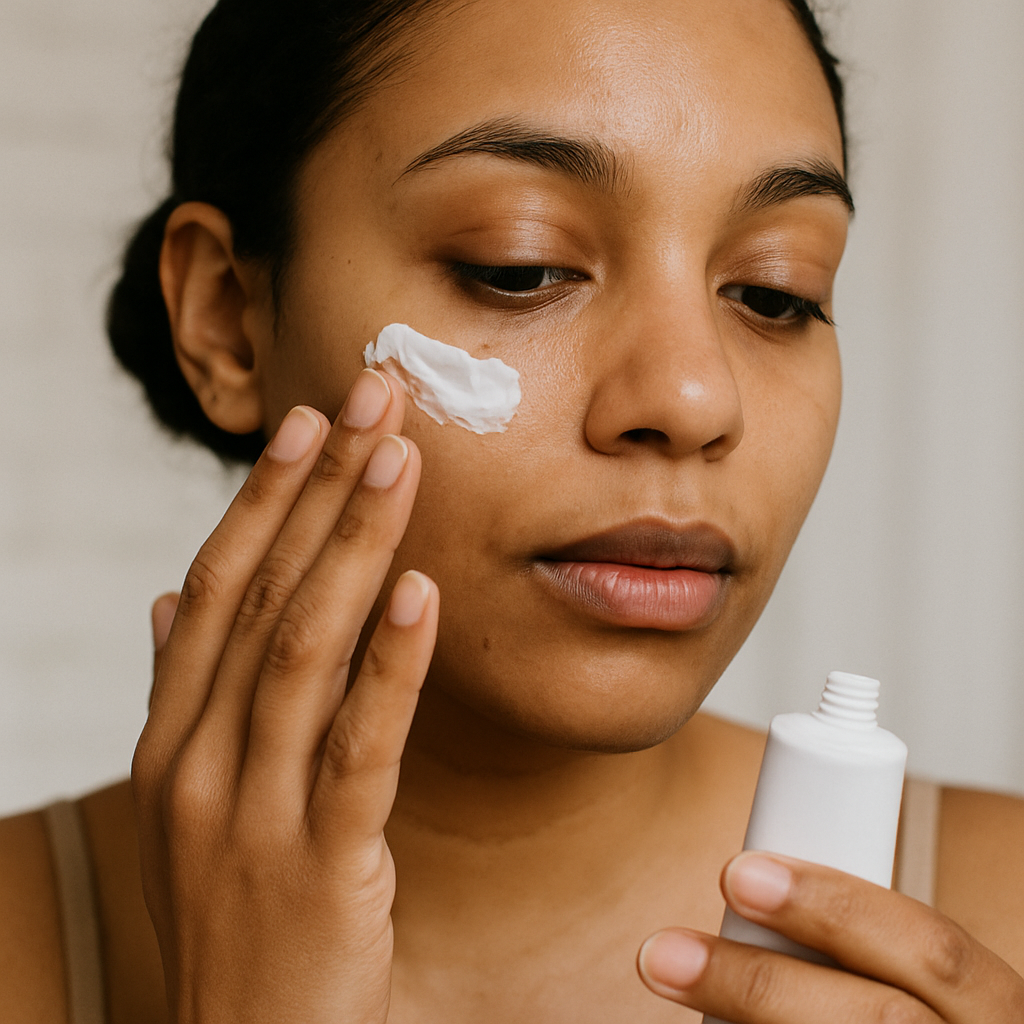When it comes to dealing with skin discoloration, dark spots, or uneven skin tone, prescription strength hydroquinone can be a powerful ally. This skin-lightening agent is commonly recommended by dermatologists for its effectiveness in reducing pigmentation. However, using it safely requires some understanding and care. In this article, we’ll explore how to use prescription hydroquinone safely and effectively.

Hydroquinone is a skin-lightening agent used to lighten areas of darkened skin such as freckles, melasma, age spots, and acne scars. It works by decreasing the production and increasing the breakdown of melanin pigments in the skin. Available in over-the-counter forms, prescription strength hydroquinone typically contains higher concentrations, making it more potent.
Chemical Composition and Mechanism
Hydroquinone is a phenolic compound that interferes with melanin production in the skin. By targeting the enzyme tyrosinase, it effectively halts the synthesis of melanin, the pigment responsible for skin color. This reduction in melanin results in lighter skin, contributing to a more uniform complexion over time. The chemical structure of hydroquinone allows it to penetrate the skin’s surface layers, offering a targeted approach to pigmentation issues.
Benefits of Hydroquinone
The benefits of hydroquinone extend beyond mere lightening of dark spots. It is especially beneficial for individuals dealing with post-inflammatory hyperpigmentation, a common aftermath of acne. Additionally, it can be a valuable treatment for those experiencing melasma, a condition often exacerbated by hormonal changes such as pregnancy or birth control use. By evening out skin tone, hydroquinone can also enhance the overall appearance of the skin, giving it a radiant and youthful look.
Limitations and Considerations
Despite its effectiveness, hydroquinone is not a one-size-fits-all solution. It may not be suitable for individuals with very sensitive skin or certain skin conditions. Additionally, its use is often limited to a specific timeframe to avoid potential side effects. It’s crucial to understand that results can vary based on skin type and the severity of pigmentation. Consultation with a dermatologist is essential to tailor treatment to individual needs and to consider any potential interactions with other skincare products.
Using Prescription Strength Hydroquinone

Prescription strength hydroquinone is more concentrated than over-the-counter options, typically ranging from 4% to 6% concentration. Here’s how you can use it safely:
Consulting a Dermatologist: The First Step
Before starting any new skin treatment, it’s crucial to consult with a dermatologist. They can assess your skin type and condition and determine whether prescription hydroquinone is suitable for you. Dermatologists provide personalized advice, considering factors like your medical history, current skincare routine, and lifestyle. Their expertise ensures that you receive the right concentration and formulation for your specific needs, minimizing risks and enhancing the effectiveness of the treatment.
Conducting a Patch Test: A Precautionary Measure
Perform a patch test on a small area of your skin to check for any allergic reactions. Apply a small amount of the cream and wait 24 hours. If you notice any redness, itching, or irritation, discontinue use and consult your dermatologist. This step is crucial, as it helps identify any immediate adverse reactions before full application. A patch test also provides insight into how your skin might react over time, allowing you to make informed decisions about proceeding with treatment.
Detailed Application Guidelines
- Cleanse Your Skin: Start with a clean face. Use a gentle cleanser to remove any dirt or makeup, and pat your skin dry with a towel. This ensures that your skin is free from impurities that might interfere with the absorption of hydroquinone.
- Apply a Small Amount: Use a pea-sized amount of hydroquinone cream and apply it to the affected areas. Avoid spreading it to areas without discoloration. This targeted approach helps concentrate the treatment on areas that need it most, enhancing its effectiveness.
- Use Sunscreen: Hydroquinone can make your skin more sensitive to sunlight. Always apply a broad-spectrum sunscreen with at least SPF 30 during the day to protect your skin from UV rays. This step is vital to prevent further pigmentation and to protect the treated skin.
- Follow a Routine: Apply hydroquinone once daily, preferably at night, as part of your skincare routine. Consistency is key for effective results. Incorporating it into your nightly routine allows the product to work overnight, giving your skin time to recover and rejuvenate.
Monitoring and Adjusting Usage
Regularly assess your skin’s response to hydroquinone. If you notice any adverse changes, consult your dermatologist immediately. They may adjust your treatment plan or recommend alternative options. Monitoring progress also helps in determining the optimal duration of use, ensuring that you achieve desired results without overextending treatment.
Possible Side Effects

by Wilhelm Gunkel (https://unsplash.com/@wilhelmgunkel)
While hydroquinone is effective, it can have some side effects, especially if not used properly. Here’s what to watch out for:
Common Side Effects: What to Expect
- Mild Skin Irritation: This can include redness, dryness, or a slight burning sensation. These effects are often temporary and may subside as your skin adjusts to the treatment.
- Increased Sensitivity to Sun: As mentioned, hydroquinone can make your skin more sensitive to sunlight. This necessitates diligent sun protection measures to avoid exacerbating pigmentation issues.
Rare but Serious Side Effects: Awareness and Caution
- Ochronosis: Prolonged use of hydroquinone can lead to ochronosis, a condition where the skin becomes dark and thick. This is more common with high concentrations and long-term use. Awareness of this rare side effect is crucial for avoiding prolonged use.
- Allergic Reactions: Some individuals may experience severe allergic reactions, such as swelling or hives. If this occurs, discontinue use and seek medical attention immediately. Recognizing these signs early can prevent further complications.
Reducing Risk of Side Effects: Best Practices
To minimize risks, follow your dermatologist’s instructions carefully, and do not exceed the recommended duration of use. Also, ensure that you use a good moisturizer to keep your skin hydrated and reduce irritation. Staying informed and proactive about potential side effects can significantly enhance the safety and effectiveness of your treatment.
Alternatives to Hydroquinone
If hydroquinone isn’t suitable for you, there are alternative treatments available for skin lightening:
Exploring Natural Alternatives
- Vitamin C: Known for its brightening properties, vitamin C can help reduce pigmentation. It is also an antioxidant, providing additional skin benefits such as protection against environmental damage.
- Licorice Extract: This natural ingredient has been shown to lighten hyperpigmentation. It works by inhibiting tyrosinase, similar to hydroquinone, but with a gentler approach.
- Niacinamide: A form of vitamin B3, niacinamide can improve skin tone and reduce dark spots. Its anti-inflammatory properties also help soothe irritated skin, making it suitable for sensitive skin types.
Investigating Medical Alternatives
- Retinoids: Prescription retinoids can help with cell turnover and pigmentation issues. They promote skin renewal, which can gradually improve skin tone and texture.
- Azelaic Acid: This acid can treat acne and lighten dark spots effectively. It is often recommended for individuals with both acne and hyperpigmentation, offering a dual-action approach.
- Kojic Acid: Derived from fungi, kojic acid is another effective skin-lightening agent. It works by inhibiting melanin production, similar to hydroquinone, and is often included in various skincare products.
Conclusion
Prescription strength hydroquinone can be a potent solution for those struggling with skin discoloration and dark spots. By understanding how it works and following the recommended guidelines, you can use it safely and effectively. Always consult with a dermatologist to ensure it’s the right choice for your skin needs, and remember to protect your skin from the sun while using hydroquinone. With the right approach, you can achieve a more even and radiant complexion.
Implementing hydroquinone into your skincare routine requires a careful balance of diligence, patience, and professional guidance. By staying informed and proactive, you can maximize the benefits while minimizing risks, leading to healthier and more vibrant skin.


